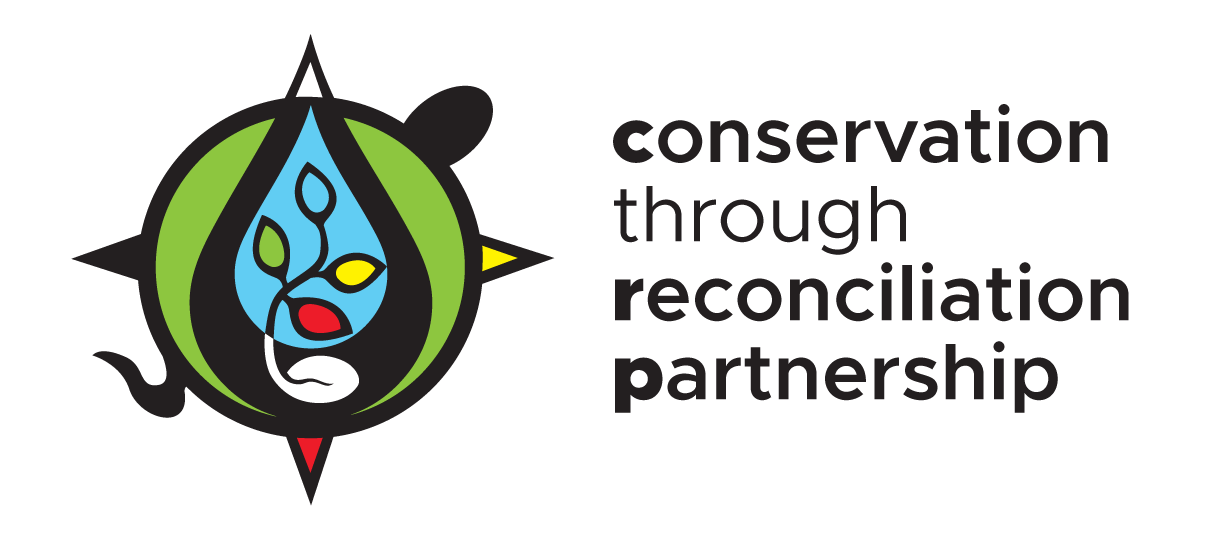Continuing the Journey: Connections between the CRP and the Indigenous Circle of Experts
By Justine Townsend with Eli Enns and Danika Littlechild
May 27, 2020
The seed that grew into the Conservation through Reconciliation Partnership (CRP) originated in the fertile soil created by the Indigenous Circle of Experts (ICE) and their collaborators. ICE’s mandate came to a close with their delivery of We Rise Together, the final report which was honoured alongside the work of ICE members in a ceremony in Ottawa in March 2018. Around that time the CRP began forming around the idea of supporting the continuation of the incredible groundwork ICE laid out in its 1 year journey. In their report, ICE identified the Four Moose Narrative (underlying challenges), examples of Indigenous-led conservation across the country, and 28 recommendations. These recommendations address ways that Canada could expand its protected area network by supporting Indigenous-led conservation in the spirit and practice of reconciliation.
ICE was formed as part of the Pathway to Canada Target 1 process, which is Canada’s effort to protect 17% of its land base and inland waters, and 10% of its marine and coastal areas by the end of 2020 (“Aichi Targets”). One of three ways Canada identified it would meet these conservation targets was through the creation and recognition of Indigenous Protected and Conserved Areas (IPCAs). As defined by ICE,
“IPCAs are lands and water where Indigenous governments have the primary role in protecting and conserving ecosystems through Indigenous laws, governance and knowledge systems. Culture and language are the heart and soul of an IPCA.”
ICE, which was comprised of Indigenous innovators and federal, provincial, and territorial government staff from across the country, hosted four regional gatherings to engage Indigenous Nations and communities in shaping the committee’s recommendations. ICE’s work is part of a unique moment in Canadian history, which continues to unfold today. By building relationships and inspiring others across Canada, ICE helped to catalyze an alternate way of conserving nature that involves a genuine effort in reconciliation, not only among peoples, but also with the Earth.
One of the “moose” identified in the Four Moose Narrative is capacity development. Capacity is required to support IPCAs through expertise such as Indigenous Guardians and ensuring that IPCAs are beneficial to all communities, human and non-human alike. In response to this moose, the CRP is supporting Indigenous Nations and communities to advance Indigenous-led conservation in their territories. The CRP received a 7-year “partnership grant” from the Social Sciences and Humanities Research Council of Canada (SSHRC) in 2019. A year ago in May 2018, the CRP initiated the Partnership in ceremony in Montreal.
Eli Enns and Danika Littlechild explain the connections between ICE and the CRP. Photos by River Voice Productions, video editing by Noémie Foley.
There are some practical connections between the CRP and ICE. For example, four of the six individuals who make up the CRP’s Leadership Circle are formerly core ICE members, including former ICE Co-Chair Eli Enns. Elder Larry McDermot, who held a ceremonial role with ICE, is a member of the CRP’s Elders Lodge. Meanwhile, former ICE Co-Chair Danika Littlechild is leading the CRP’s research stream on Ethical Space. Other individuals who were involved in supporting ICE directly or indirectly, or whose lives and work were touched by ICE, are also part of the Partnership. The CRP is greatly enriched by these connections and relationships.
The CRP’s culture and mandate is also deeply informed by the ethical foundations that ICE modeled in their work. These are Ethical Space and Two-Eyed Seeing, which the CRP adopted as Guiding Principles for our collective work. As Danika Littlechild explains,
“[in the ICE report]…we wanted to elevate Indigenous systems to a position of equity with the written Western…or scientific knowledge systems that were being used in the status quo management and governance of existing conserved and protected areas. IPCAs for us was really about creating that space once more for Indigenous systems to function with integrity in a way that really honoured what it is that those systems have to offer in terms of bringing balance back into the environment.”
By maintaining Ethical Space and a commitment to Two-Eyed Seeing, or the braiding of Indigenous and Western knowledge systems, we will meet any challenges with open hearts and minds. As Eli Enns states,
“Reconciliation is in a fragile state in Canada right now. So collectively if we have that respect [iisaak] in our hearts, in the way that we posture in our lives, we’ll be ok”.
Along with over 50 partner organizations, the CRP is honoured to be advancing the vital work that ICE commenced in 2017. These amazing partners include environmental non-governmental organizations, cultural institutions, researchers and educators, and Indigenous organizations who are all committed to the transformation of conservation in Canada.
Together, we are rising!

